LUCITOPIA RURAL DESIGN CHALLENGE (LRDC)
Qingliangshan, Zixi County, China
21st to 26th May, 2018
The Lucitopia Rural Design Challenge will take place in Qingliangshan national forest park, Zixi County, in Jiangxi Province, China in May, 2018. The Challenge marks the start of ‘Lucitopia’, a highly ambitious project, focused around new concepts of rural town building to encompass key values of ecology, economy, society and related industry, agriculture, services, culture and systems.
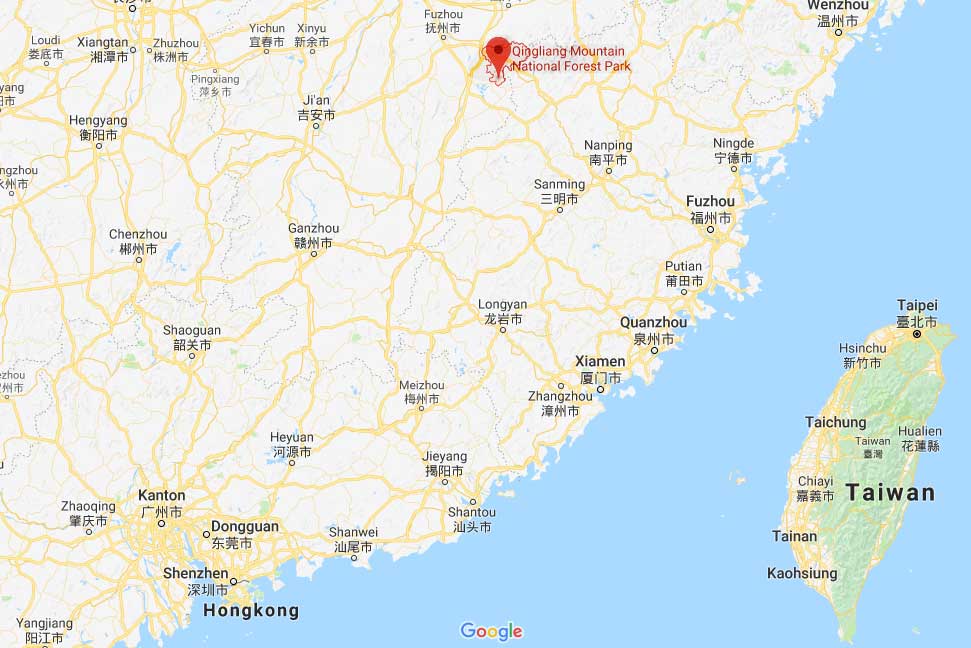
Location of the Challenge in Zixi county, Jiangxi Province, China.
The Challenge
‘Design and develop a new town and community in Qingliangshan national forest park, based on the organic and balanced unification of “producing (work), living (everyday life) and ecology”, and using the tangible and intangible natural assets and culture of the area. Key elements include Green Industry, Livable ecology, Culture and Art, Community and a Cohesive Operational System. As a means of rural repopulation, this initiative should particularly attract potential residents and visitors who share the same values with regard to life fulfillment in face of the demands of the modern age, and should be designed to be expanded and replicated in other areas’.
The Location
The LRDC focuses on the Zixi County in Jiangxi province, some six hours by train and road inland from Xiamen in Southern China. The relative inaccessibility of Zixi county has brought about both disadvantages and benefits: while the area is largely undeveloped, it has maintained an aura of outstanding natural beauty and unspoilt authenticity. The slogan “Pure Zixi” is frequently used by local officials.
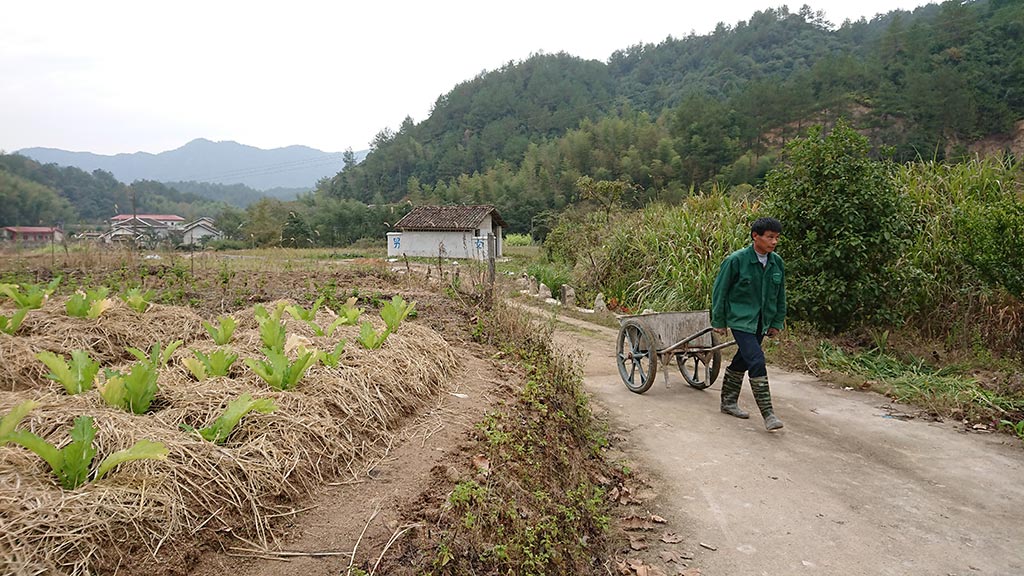
株溪水电站-Zhu Xi Hydropower Station
Like many such rural areas in China, and indeed, worldwide, Zixi county has suffered from family fragmentation and depopulation as younger residents left their homes in search of work in the larger urban centres. The population, particularly in the villages, is now composed mainly of older people and some children. The inhabitants of the area also comprise two different groups: the ‘’originals” with a long local tradition and the “immigrants’, who were moved to the area from Chun’an County in Zhejiang Province in 1959 after the flooding of the area to create the Qiandao Lake. Though both groups of inhabitants are visually strikingly different in their architectural and living styles, they cohabit in a perfectly friendly and supportive way, and are equally affected by the population drain.

Most young people have moved to the cities. Right: 王石坑-WangShiKeng Village. Left: 夏家山-XiaJiaMountain Village.
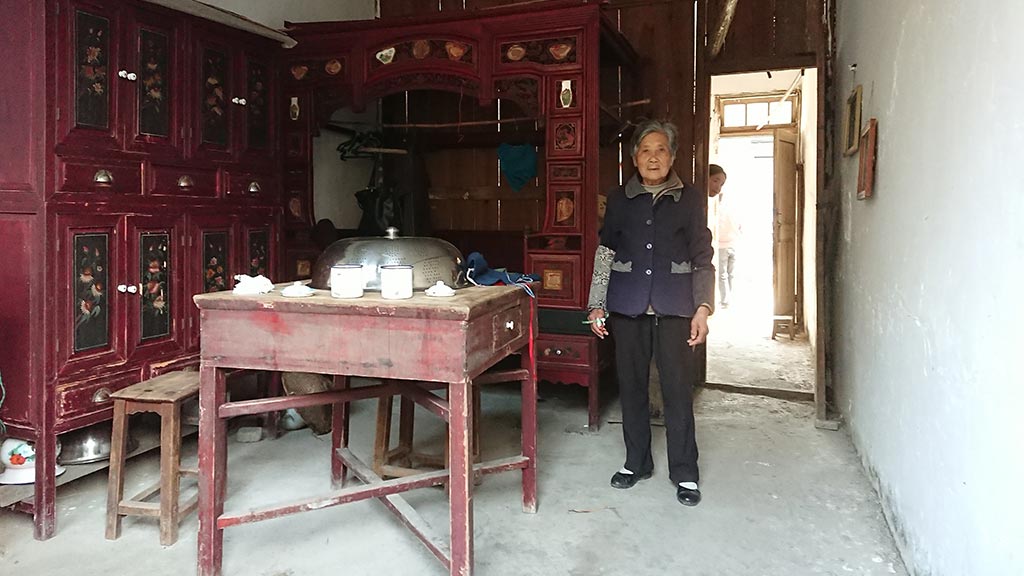
This lady lives all by herself in an abandoned former ‘Educated Youth’ camp, down the road from the 株溪林场厂部- administration of Zhuxi tree farm
On an economic level, Zixi county town has invested in a large nature-focused tourist centre and several museums. The town is famous for its bakery and confectionary school, which sends high quality bread and highly qualified bakers throughout China. The area also produces high quality tea. Otherwise the village areas are renowned for a very plentiful supply of top quality bamboo, all kinds of organic vegetables and fruit, high quality spring water and delicious honey.
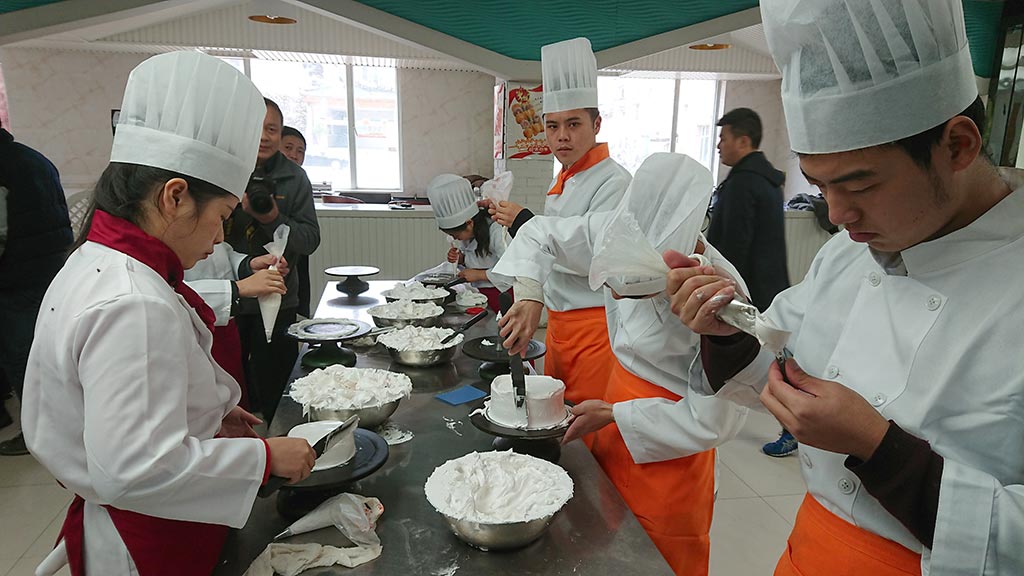
资溪面包文化园-Zixi bread culture park – bakery and confectionary school.

Bamboo forest.
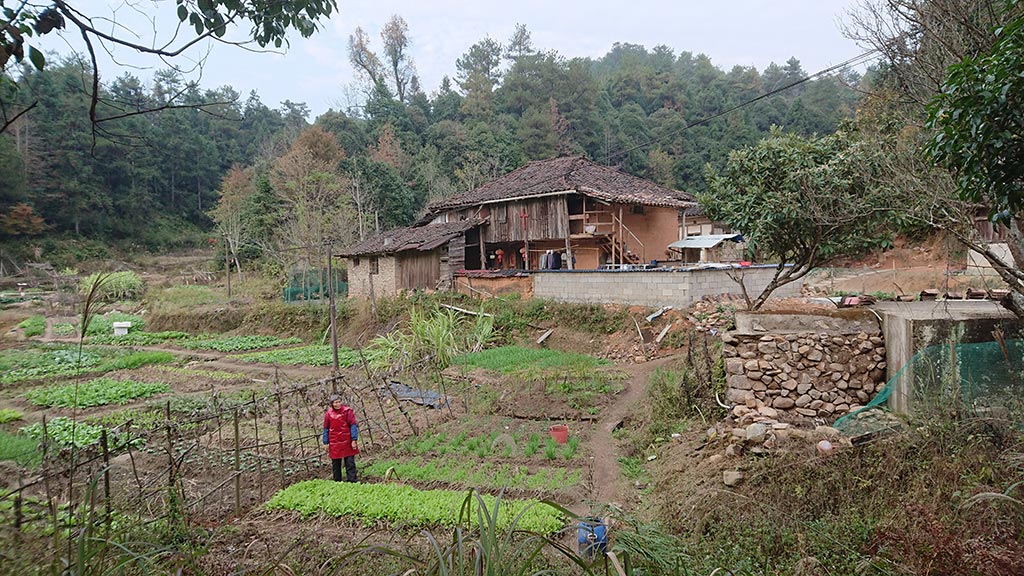
Organic vegetables and fruits (and a Catholic church!) in the proximity of the 株溪林场厂部- administration of Zhuxi tree farm

Organic vegetables and fruits. 株溪水电站-Zhu Xi Hydropower Station.
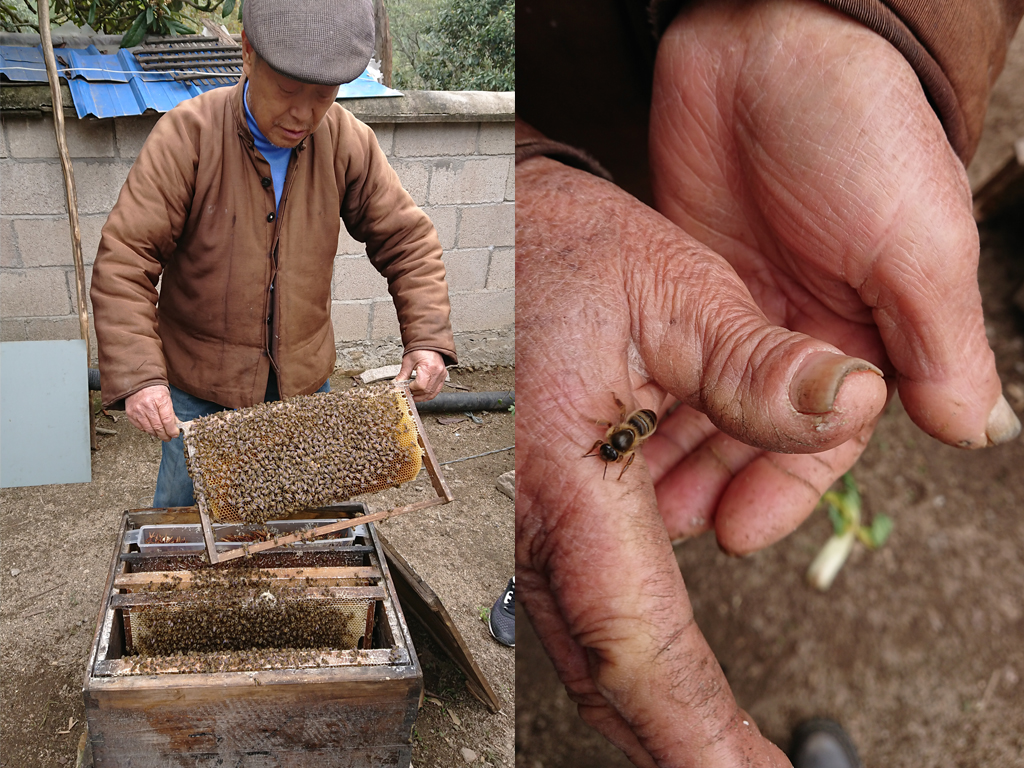
王石坑-WangShiKeng Village. This man produces one of the best honey in the county and proudly shows his queen bee.
Format
In line with the usual format of the Design Challenge, several teams of design professionals and design students, each team consisting of four members with diverse and complementary skills, will travel from Europe to Zixi County to participate in the event to design solutions for the structure, content, and services of the new town. In Zixi, they will also be joined by teams of designers from Hong Kong, Taiwan and mainland China.
Dates
The dates for the Design Challenge event are from 21st May to 26th May 2018. Participating European teams should schedule the period from 19th May to 28th May in their planning, to include time for travel.
Program
The provisional program for the event would be as follows:
-
- 21st May: Research: Traveling to visit villages and other places of interest in the area, and official opening of the Challenge and the Lucitopia project
- 22nd May: Research: Traveling to visit villages and other places of interest in the are23rd May – 25th May: Intensive team design and development workshops
- 26th May: Presentations, Jury and Award Ceremony. Closing celebrations
Accommodation, Meals and Local Transport
– Accommodation will be provided in a new camp, which is being constructed immediately before the event
– Meals will either be provided or food can be purchased locally
– All local travel will be provided for the Design Challenge participants (buses, electric cars or bikes)
————————————————————————————————————
INTERVIEW WITH ZHEMING ZHONG, LUCITOPIA/LRDC Project Manager China
CC: Where did the overall Lucitopia project concept originate?
ZZ: We developed all of the concepts, methodology, and strategies. We didn’t start with the idea of developing a town, but rather something small – from the design and creation of the objects, experience and behaviours of people’s everyday life, to a space or an environment in which people are able to experience everything we design for them, from which we had a new focus which was the interaction between people in this environment. Then we started to think about the community and the environment. We discovered that what we’ve been looking for in our design for humans is always there in the Chinese rural community and its environment – the warmth, purity, smartness and solidarity of the people and the community, the ecology, the nature, and the way the people co-exist with nature. They have the foundation (resources) to practise some of our ideas, even though they have the disadvantages at the same time (the relative remoteness, de-population, etc.).
CC: Why was this approach selected?
ZZ: I think the above to an extent provides an explanation of why we used this approach. From our side, what we’ve been always interested is to study people: what kind of designs can help them in their everyday life and work, what kind of experience (of maybe simply dining, drinking, playing, etc.) can evoke their deeper emotion, how they interact with their living or working space, how they would behave in their socializing, etc. From the perspective of the local rural area, they have their unique natural, cultural and social resources, but they are confronting de-population, de-vitalization, the loss of identity, and eventually their disappearance.
CC: Was this decision influenced by other similar projects? If so, where?
ZZ: The above texts describe only the start of the idea. We then needed to do the research and develop the idea in order to bring it into reality. We researched many practices in China and abroad, and there are many developments based on a real estate model, but there are also some inspirational cases, such as the case of Wu zhen in Zhejiang province, which is famous for its international Wu zhen Theater Festival, as well as the later World Internet Conference. Many industries, services, and contents were built around these two big events. Art Setouchi and the Echigo-Tsumari Art Field are two very good examples in Japan that revitalize the de-populated Japanese rural areas through art events. There are more cases I can list, but for us, it’s important to develop our own plan, which suits this specific area.
CC: Can you tell us more about Rural Development in China?
ZZ: Recently, I’ve seen many discussions about rural development, as well as a relevant government development strategy. The rural area has been treated in a “supporting role” to the urban area for a long time, which means all the resources were allocated to the urban area, until the 19th national congress of the communist part held last year came up with a “strategy of rural revitalization” – the rural area will be more independent, more resources will be reallocated to rural areas. The strategy came after many rural development practices had been undertaken in the past decades, which were generally a kind of “real estate model”.
CC: How would you describe the core concept of the Lucitopia project?
ZZ: This development around Qingliangshan is based on the core concept of “the organic unification” of ecology or environment (E) production (P) and living (L). General planning revolves around five elements: Green Industry (Compound – Industry chain), Liveable Ecology (Resident-Entrepreneur-Tourist co-exist), Culture and Art (Catalyst), Community (Foundation) and Flexible Operational Mechanism (Vitality/Energy of the town). We are dedicated to creating a model of a town, in which the people lead a fulfilled life that meets the human needs in the new age.
CC: Why is the project called Lucitopia?
ZZ: Qingliangshan Qingliang is a word, comprising two Chinese characters: Qing and Liang. Liang often means “cool”, and Qing could be translated as “refreshing”, so Qingliang could be explained as refreshing and cool. Therefore we think it relates to “Lucid”. It is also a Buddhist term and it has deeper meanings.
With Lucitopia, we are describing a utopia, but with a clear shape in a real world. Utopia is symbolic for our town but it’s not just idealism, it ought to work in reality.
CC: How does the Design Challenge relate to the whole Lucitopia project?
ZZ: The Design Challenge is the first activity in the construction of the camp. The Challenge will focus on designing community, industry, service and architectural solutions, using materials such as bamboo, wood, pre-fabricated architecture, and electronics. In addition to the design/ fabrication workshops of the design teams, there will also be a large space reserved for presentations, possibly also conferences and exhibitions. Accommodation is provided and the meals will be mainly prepared outside of Qingliangshan, and will be delivered to the design participants, in order ensure that the food sufficient to host that amount of people.
We will also have a headquarters camp and a research and education camp, focusing initially on agriculture and food in the 1st phase.
CC: Who are the stakeholders, and how are you cooperating?
ZZ: For us, Lucitopia is an eco system that includes everything (concept, culture, industries, contents, events, services etc.), which we would like to do. Lucitopia town in Qingliangshan is a physical realisation, which incorporates Lucitopia’s concepts, culture and values. The local rural area is confronting many problems, and we – the stakeholders – are looking for the opportunity to realise our ideas. This is the point where we collaborate with each other. Generally, the county government plays the role of supporting and supervising us in this project in order to revitalize, re-develop and regenerate this rural area. As for other stakeholders, the planned area includes many existing entities – the villages (farmers, their houses, fields, gardens, etc.), enterprises and businesses (water plant, hotels, restaurant, etc.), and the parts belonging to the tree farm. It’s very important to cooperate with the all the above-mentioned parties. Methods we could use include creating jobs for the remaining residents, supporting their business activities, bringing the existing businesses together or starting a new one together. However, it could also mean offering to rent or buy their property, if they have moved to other places.
CC: Can you give us more practical details on planning and logistics?
ZZ: The camp should be completed in plenty of time to meet the planning for the challenge (second half of May), and we’ll need time to test it before the challenge.
- It’s modular and extendable, and it will be capable of hosting the challenge (sleeping/bathing/eating/working/presenting…)
- We will organise a volunteer team of translators
- We are thinking to set up an internal transportation in Qingliangshan during the challenge, like the bus in the city, but instead of using buses, we will use electric sightseeing cars, as well as some sharing bicycles in the area
- The tree farm and the county will give all the necessary support (communication networks, mobile medical units, security, volunteers, etc.)
